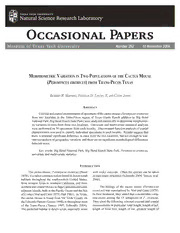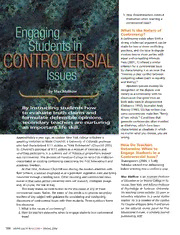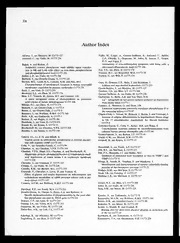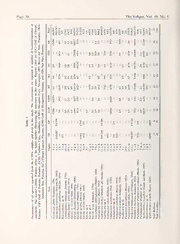
ERIC ED610931: Using the Student Attrition Lookup Tool (SALT) to Plan for Attrition in School-Based Evaluations PDF
Preview ERIC ED610931: Using the Student Attrition Lookup Tool (SALT) to Plan for Attrition in School-Based Evaluations
Paper #2 Abstract Title Using the Student Attrition Lookup Tool (SALT) to Plan for Attrition in School-Based Evaluations Authors Jordan Rickles, American Institutes for Research Kristina Zeiser, American Institutes for Research Background Student-level, school-based longitudinal evaluations of educational practices and interventions often encounter study attrition when students move away from, or drop out of, study schools. This mobility-induced attrition decreases sample size, weakening the study’s power to detect a treatment effect. While the research methodology literature includes empirical benchmarks for effect sizes (Hill, Bloom, Black, & Lipsey, 2008; Bloom, Hill, Black, & Lipsey, 2008) and intraclass correlations (Hedges & Hedberg, 2007; Schochet, 2008) to help researchers determine adequate sample sizes through power analysis, it does not include similar benchmarks to assist proper planning for attrition. If a power analysis does not take possible attrition into account, the planned study could be underpowered. Figure 1 shows how student attrition can affect the minimum detectable effect size (MDES) under different study designs. Purpose This paper describes and demonstrates a new online resource developed to help researchers proactively plan for student attrition: the Student Attrition Lookup Tool (SALT). With SALT, researchers can access student mobility estimates for different student and school subpopulations and for different transition periods from kindergarten to grade 12. The paper has three main objectives: (1) describe the data and methods behind SALT; (2) demonstrate how to navigate SALT; and (3) demonstrate how to use student attrition benchmarks in a power analysis. The paper is primarily intended for applied researchers planning school-based studies that follow students over time. Data SALT is based on four longitudinal data sets from the National Center for Education Statistics (NCES). The use of multiple data sets allows us to examine rates of student mobility for students across a range of grade levels—with two data sets covering mobility during the elementary school years and two data sets covering mobility during the high school years—and present findings across different U.S. public school student populations relevant to applied researchers. Important aspects of each data set are provided in Table 1. Methods With the four NCES surveys, we constructed analytic files to examine student mobility across six transition periods (see Figure 2). To examine student mobility during each transition period accurately, we restricted the analytic files to students in the appropriate longitudinal follow-up waves and to public schools with a grade range that includes the transition period (e.g., the ECLS-K:98 grade 1 to 3 analytic file is restricted to schools with grades 1 and 3). SREE Spring 2017 Conference Symposium: Paper #2 Abstract 2-1 Since applied researchers increasingly utilize data from district or state student information systems, we estimated three types of student mobility rates (for each transition period) to reflect three different levels of data coverage (see Figure 3): Any mobility (left baseline school / outside school data) Left the district, state, or public school system (outside district data) Left the state or public school system (outside state data, including dropouts) We estimated mobility rates for the total sample, as well as for student and school subgroups (see Table 2 and Table 3). When calculating student mobility rates, we used Taylor-series linearization to account for survey weights and the multistage nature of the survey designs. Using the survey sampling weights allows us to calculate mobility rates that are generalizable to the U.S. public school student population. Results Researchers can access SALT through an interactive website that is currently under development, and will be publicly available before the SREE conference. Through the SALT website, researchers can get student mobility rates for any of the student or school subgroups listed in Tables 2 and 3, as well as different subgroup combinations (e.g., students with low math achievement in urban schools). A sample screenshot of the SALT website is provided in Figure 4. Users have the option to add confidence intervals to the graph, and can request a table with the mobility rate estimates and standard errors. To demonstrate how researchers can use SALT in power analyses, we walk through an example power analysis for an individual random assignment design. We use the following formula to determine how student attrition influences the minimum required sample size (MRSS) for a given MDES: 𝑀𝑅𝑆𝑆 = (𝑀𝛼,𝛽,𝑑𝑓)2( 1−𝑅2 )( 1 ), 𝜇 𝑀𝐷𝐸𝑆 𝑃(1−𝑃) (1−𝜇) where 𝑀 is the multiplier for a given alpha-level (type I error), beta-level (type II error), 𝛼,𝛽,𝑑𝑓 and degrees of freedom (df); R2 is the proportion of variance explained by covariates; P is the proportion of units in the treatment group; and µ is the student attrition rate. Since the student attrition rate is unknown prior to conducting the study, we can get estimates of the rate using SALT. On the SALT website, we use the pull-down menus to request student mobility estimates that align with our sample of interest. Results from this query are displayed in Figure 4. Depending on the type of data collection, the expected student mobility rate is 26% (data from schools), 18% (data from districts), or 12% (data from state). By plugging these attrition estimates into the above MRSS equation (and assuming R2 = .50 and P = .50), we get the power analysis results presented in Figure 5. If we ignored attrition and wanted an MDES of 0.10, we would target a sample size of 1,576 students. That would, however, result in an underpowered study given attrition. If we only collect data from students who stay in the study schools through 11th grade, the actual sample size needed for an MDES of 0.10 is 2,130 students. If, however, we can get student data from a statewide database, the sample size needed for an MDES of 0.10 is 1,922 students. With this information, we can SREE Spring 2017 Conference Symposium: Paper #2 Abstract 2-2 determine whether having 208 fewer students in the study (2,130 – 1,922) is worth the effort of gaining access to statewide data, rather than collecting data directly from the study schools. The paper will also demonstrate how attrition benchmarks from SALT can be incorporated into existing power analysis software, such as PowerUp! (Dong & Maynard, 2013), and discuss the use of student attrition benchmarks in block and cluster randomized designs. Conclusions This paper addresses a limitation in current power analyses by providing researchers with information about natural rates of mobility-based attrition. Student mobility represents the attrition rate one can expect under conditions in which factors such as consent and survey response are not an issue. In addition, mobility is a major source of attrition in studies that rely on extant administrative data (e.g., state assessment data). By making student mobility rates across different student and school characteristics, as well as different degrees of mobility that correspond to different data collection options accessible, researchers can proactively plan for normative attrition rates in longitudinal studies. SREE Spring 2017 Conference Symposium: Paper #2 Abstract 2-3 References Bloom, H. S., Hill, C. J., Black, A. R., & Lipsey, M. W. (2008). Performance trajectories and performance gaps as achievement effect-size benchmarks for educational interventions. Journal of Research on Educational Effectiveness, 1(4), 289–328. Dong, N., & Maynard, R. (2013). PowerUP!: A tool for calculating minimum detectable effect sizes and minimum required sample sizes for experimental and quasi-experimental design studies. Journal of Research on Educational Effectiveness, 6(1), 24–67. Hedges, L. V., & Hedberg, E. C. (2007). Intraclass correlation values for planning group- randomized trials in education. Educational Evaluation and Policy Analysis, 29(1), 60– 87. Hill, C. J., Bloom, H. S., Black, A. R., & Lipsey, M. W. (2008). Empirical benchmarks for interpreting effect sizes in research. Child Development Perspectives, 2(3), 172–177. Schochet, P. Z. (2008). Statistical power for random assignment evaluations of education programs. Journal of Educational and Behavioral Statistics, 33(1), 62–87. SREE Spring 2017 Conference Symposium: Paper #2 Abstract 2-4 Tables and Figures Table 1. Summary of data sources and analytic file sample sizes Data Transition period Survey waves Analytic file sample source (child weight) ECLS-K:10 Kindergarten (spring Wave 2 to wave 10,300 students in waves 2 to 4 2011) to grade 1 4 (W4C4P_20) longitudinal sample and in a wave 2 public (spring 2012) school with kindergarten and grade 1 ECLS-K:10 Kindergarten (spring Wave 2 to wave 9,350 students in waves 2 to 6 longitudinal 2011) to grade 2 6 (W6C6P_20) sample and in a wave 2 public school with (spring 2013) kindergarten and grade 2 ECLS-K:98 Grade 1 (spring 2000) Wave 4 to wave 10,220 students in waves 4 to 5 to grade 3 (spring 5 (C45CW0) longitudinal sample and in a wave 4 public 2002) school with grades 1 and 3 ECLS-K:98 Grade 1 (spring 2000) Wave 4 to wave 7,280 students in waves 4 to 6 longitudinal to grade 5 (spring 6 (C456CW0) sample and in a wave 4 public school with 2004) grades 1 and 5 HSLS Grade 9 (fall 2009) to Wave 1 to wave 15,160 students in waves 1 to 2 grade 11 (spring 2012) 2 (W2W1STU) longitudinal sample and in a wave 1 public school: ELS Grade 10 (spring 2002) Wave 1 to wave 10,900 students in waves 1 to 2 to grade 12 (spring 2 (F1PNLWT) longitudinal sample and in a wave 1 public 2004) school NOTE: All sample sizes are rounded to the nearest 10 per IES publication policy. Table 2. Student subgroups included in SALT, by data source Characteristic Subgroups Included in SALT ECLS-K:10 ECLS-K:98 HSLS ELS Gender Female Male Race African American Asian/Pacific Islander Latino/Hispanic White SES (NCES-defined Low (bottom two quintiles) quintiles) High (top two quintiles) Baseline reading Low (bottom two quintiles) achievement High (top two quintiles) Baseline mathematics Low (bottom two quintiles) achievement High (top two quintiles) Student disability Student with a disability status Student without a disability Home or native English is home/native language language English is not home/native language NOTE: SES = socioeconomic status. SREE Spring 2017 Conference Symposium: Paper #2 Abstract 2-5 Table 3. School subgroups included in SALT Characteristic Subgroups Included in SALT Title I status Title I school Not a Title I school Geographic region Northeast Midwest South West Location City Suburb Rural or town School size (enrollment) Small (less than 500 students for elementary schools; 1,500 for high schools) Large (500 or more students for elementary schools; 1,500 for high schools) Concentration of underrepresented Low (less than 25% of total enrollment) minorities Medium (25-49% of total enrollment) High (50% or more of total enrollment) Concentration of students eligible for Low (less than 25% of total enrollment) Free/Reduced Price Lunch program Medium (25-49% of total enrollment) High (50% or more of total enrollment) District size (number of schools in the Small (less than 5 schools) district with a grade range that Medium (5-19 schools for elementary schools; 5-9 schools includes the transition period) for high schools) Large (at least 20 schools for elementary schools; 10 for high schools) SREE Spring 2017 Conference Symposium: Paper #2 Abstract 2-6 Figure 1. Relationship between student attrition and MDES for select research designs NOTE: Example power analysis parameters set to detect an MDES of 0.15 (significance level alpha = 0.05, statistical power beta = 0.80) under a condition with no student attrition. IRA = individual random assignment design BIRA = block individual random assignment design CRA = cluster random assignment design Model numbers in parentheses refer to the model numbering used in Dong & Maynard (2013). SREE Spring 2017 Conference Symposium: Paper #2 Abstract 2-7 Figure 2. Transition periods included in SALT NOTE: All surveys were administered during the spring of the school year, with the exception of the HSLS ninth- grade survey, which was administered during the fall of grade 9. Figure 3. Mobility classification for SALT SREE Spring 2017 Conference Symposium: Paper #2 Abstract 2-8 Figure 4. Sample screenshot from preliminary version of SALT website SREE Spring 2017 Conference Symposium: Paper #2 Abstract 2-9 0 1 - 2 ), st e d t e ail -t o w n io 5 (t t 0 ri =. att pha ent s: al d n or stu sumptio f s nt s a u si t acco er analy bstract a w A h o 2 t p # s g r t n e ul wi ap s o P alysis re on the foll e size ct size mposium: ple power an mates are based 50, and P=0.50. m required samplm detectable effe 7 Conference Sy e 5. Sam MRSS esti280, R =0.= minimu= minimu pring 201 Figur Notes: beta=0.MRSS MDES SREE S
The list of books you might like

Mind Management, Not Time Management

The Strength In Our Scars

Credence

Atomic Habits James Clear

Infinite ergodic index of the ehrenfest wind-tree model

byggforskningsrådet

Greek Government Gazette: Part 1, 2013 no. 91

Büyükşehir Belediye Meclisi'nin Değerli Üyeleri

Hewings - Advanced Grammar in Use with Answers 2e HQ

Morphometric variation in two populations of the cactus mouse (Peromyscus eremicus) from Trans-Pecos Texas

ERIC EJ738065: Engaging Students in Controversial Issues

Greek Government Gazette: Part 4, 2006 no. 21

Baseline levels of coral disease in the Northwestern Hawaiian Islands

ERIC ED357512: Overcoming Barriers to Educational Restructuring: A Call for System Literacy.

Molecular Cell Research 1993: Vol 1177 Index

Margadarshakaru

Tales of The Birds by W Warde Fowler

biological control agents in new zealand






